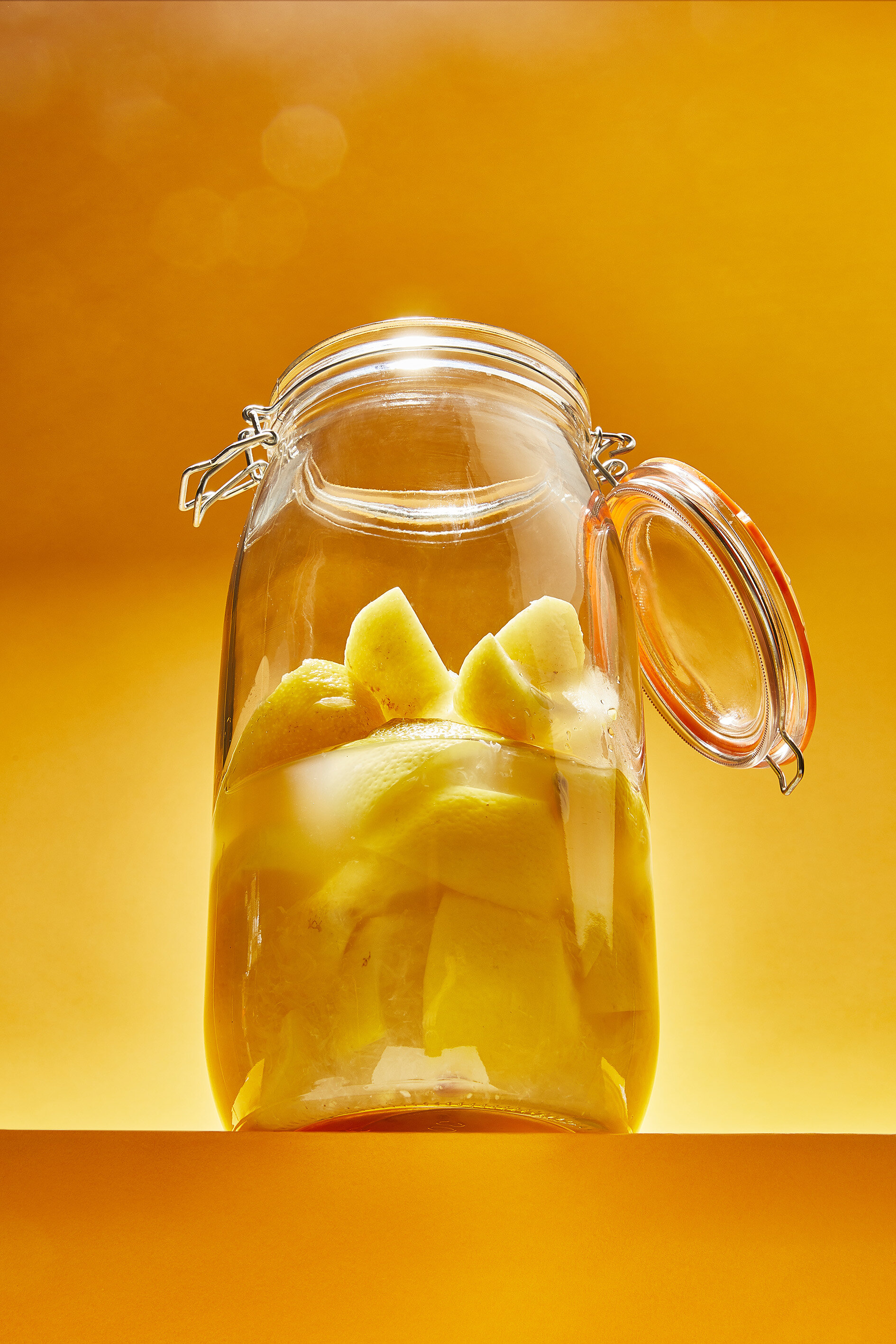Sustainable citrus recipes to hack your drinks to_ Josh McIntyre
Citrus Stock
Producing a citrus stock at home is a great way to ensure the you make the best use of your squeezed lime husks, squeeze that £ a little further and do a little good for the world by reducing your consumption. Combining your citrus stock in a 1:1 ratio with freshly squeezed juice doubles the yield, without compromising on flavour.
Add 1.5L of water and bring to a boil
Add 1kg of citrus husks and boil for up to* 5 minutes with lid on
Remove pot from heat and strain. Give the husks a quick press to get the last of the liquid out
Place liquid back on heat without lid, bring to boil then simmer and reduce by 1/3 of original weight. Total volume when reduced should be 1L
Add 7% sugar (i.e. 70g for 1L - all citrus has some sugz in it anyway, and this helps stabilise too)
Add acid - see below for best ratio's
Filter through sieve, or ideally, coffee filter paper. Bottle and stick in the fridge – will keep for 1 week.
Obviously, all citrus types are different, so depending on the variety, the acidic additions must be tweaked for best results. Below are some recommendations
Lemon & Lime varietals - 2% Citric and 1% Malic Acid
Orange & Grapefruit Varietals - 1% Citric and 1% Malis
Mandarin, etc - 1% Citric and 2% Malic
Oleosaccharum
An Oleosaccharum (oleo) is a simple blend of sugar and oils from fruit skins, most commonly from citrus fruits. A great way to pack a flavoursome punch into any drinks that you make at home, be it a refreshing lemonade or a pimped out G&T. Creating an Oleo is a simple preservation method – as old as the record books go, along with curing and pickling and is extremely effective, in a sterile environment, this will keep for months and will remain as fresh as a summer day.
Oleo’ have enjoyed a renaissance over the past few years, as the craft cocktail movement has gained traction, this incredible ingredient (used liberally in cocktails through the Victorian & Georgian periods) has been reintroduced in popular modern cocktails by bartenders the world over.
Making an Oleo at home is incredibly simple, you only need 3 ingredients; Citrus Peels, Sugar & Time. To make a batch, follow these steps –
Using a clean fruit/veg peeler, carefully peel the skins from your favourite citrus fruit (Be very careful, a slip of the hand can easily take a finger tip off, an unfortunate occurrence that many a bartender can attest to).
You’ll notice that you’ll take a little of the pith (White fibres underneath the skin) when you peel the fruit – you don’t want this, pith gives you a dry, bitter flavour, so carefully cut any large sections away with a fruit knife.
Once you have your lovely fresh and aromatic peels, weigh ‘em and pop them in a jar or tuperware container and cover with the same weight of granulated sugar.
Seal container and give it a really good shake to ensure that the peels are completely coated in sugar and set this aside in a cupboard for 24-36 hours, shaking once or twice along the way.
After 48 hours max, you should be left with a very viscous and rich sugar syrup (If there’s a little undissolved sugar at the bottom, add either a little squeezed citrus juice, or a drop of water and stir until it is fully dissolved)
Strain the liquid to remove the peels and store in an airtight container in the fridge for up to 2 weeks.
A simple chemical process takes place in the container between the sugar and the oils and slowly, the oils are teased from the skin into the sugar, turning it into a punchy and fragrant liquid, the term is known as ‘osmosis’ – the same process used to cure fish and meats.

